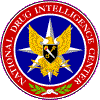ARCHIVED
![]() To Contents
To Previous Page To Sources
To Publications Page To
Home Page
To Contents
To Previous Page To Sources
To Publications Page To
Home Page

|
National Drug Intelligence Center Rhode Island Drug Threat Assessment July 2003 OutlookHeroin likely will remain a significant drug threat to Rhode Island. Abuse levels are high and the availability of low cost, high purity South American heroin will continue to attract a new, younger abuser population that snorts or smokes the drug. Providence likely will continue to serve as a transshipment location for heroin destined for Cape Cod and eastern Massachusetts because of its location along I-95. Dominican criminal groups will remain the principal wholesale- and retail-level heroin distributors. African American and Hispanic criminal groups and gangs and various local independent dealers, among others, also will continue to distribute retail quantities of heroin in Rhode Island. The availability and abuse of cocaine, particularly crack cocaine, will remain a serious drug threat to Rhode Island. Current levels of availability and abuse will remain high, and violent crime will continue to be associated with cocaine distribution and abuse. Dominican criminal groups will remain the primary wholesale- and retail-level powdered cocaine distributors because of their well-established transportation and distribution networks. However, Caucasian criminal groups and local independent dealers also will continue to distribute retail quantities of powdered cocaine. African American criminal groups and gangs, Hispanic gangs, Caucasian criminal groups, and various local independent dealers, among others, will continue to distribute retail quantities of crack cocaine. Marijuana distribution and abuse will remain widespread in Rhode Island. Marijuana produced in Mexico will continue to be the type most commonly available in the state. Cannabis cultivated locally as well as marijuana produced in Canada and Jamaica likely will remain available at current levels. Caucasian, Dominican, Jamaican, Mexican, and other Hispanic criminal groups and various local independent dealers will continue to distribute marijuana at the wholesale level. African American, Caucasian, and Hispanic criminal groups, local independent dealers, OMGs, and gangs will continue to distribute marijuana at the retail level. Other dangerous drugs will remain a lesser drug threat than heroin, cocaine, and marijuana. The availability and abuse of the club drugs MDMA and GHB and its analogs likely will increase. Nightclubs, raves, techno parties, college campuses, private parties, gyms, dance clubs, high schools, and college campuses will remain the primary venues for the distribution of club drugs. Pharmaceutical diversion and abuse will remain a serious drug threat to the state. Caucasian criminal groups and local independent dealers will remain the primary distributors and abusers of MDMA, GHB and its analogs, ketamine, LSD, and diverted pharmaceuticals. Methamphetamine production, availability, and abuse are expected to remain at low levels in Rhode Island.
|
End of page.